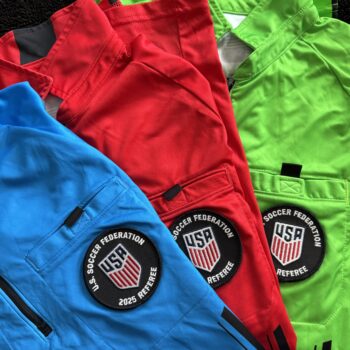
Getting Your Intensity Level Right
All referees struggle at times during a season with inconsistency. In fact, this can often be one of the top issues that get in the way of refs reaching their optimal performance levels. Have you ever asked;
- Why do I handle games well one half and poorly the next?
- Why did my decisions seem to be flowing at one part of the game but not later?
- Why was I ready for the big game and flat for others?

The Pressure Game: How Stress Affects Soccer Referees
Ever wondered why some soccer referees do well under pressure while others crumble? A huge part of the answer lies in the Yerkes-Dodson Law. This psychological principle explains how pressure affects performance, and it turns out that a little stress can be a good thing for referees.
When referees face pressure, their bodies release stress hormones like cortisol, triggering their “fight or flight” response. This can boost focus and reaction time—but only up to a point. Studies show that experienced referees and athletes adapt better to pressure, often reaching a “flow” state where their decision-making becomes sharper (Diamond et al., 2007).
However, there’s a sweet spot for pressure. Too little, and a referee might be sluggish or disengaged. Too much, and their brain goes into overdrive, leading to panic, rushed calls, or freezing up. This is where a key takeaway comes in: moderate stress improves performance, but extreme stress is a game-changer—in the worst way (Koehn, 2013).
Think of it like riding a roller coaster. If you choose to take on the pressure, it can be exhilarating! But if you feel completely out of control, it’s terrifying. The same goes for refereeing—when refs feel confident and prepared, they use pressure as fuel rather than letting it derail their game.
So, a little pressure is fine—but too much can get in the way of good decision-making.
While the players/coaches/environments are part of the stress/activation/pressure equation, one of the biggest reasons for referee performance inconsistency is arousal/intensity control. For our purposes we will call this Intensity Level.
How Do We Define Intensity Level?
Your “Intensity Level” is your state of readiness and refers to your physical, emotional and mental state. In simple terms, it is a measure of your internal energy level (sometimes talked about as butterflies). It includes psychological (fear, anger, confidence, nervousness, aggression) and physiological (heart rate, breathing, temperature, etc.) elements. The Inverted U Theory (stemming from the Yerkes-Dodson work) below demonstrates that a referee performs best when they are in their optimal intensity level.
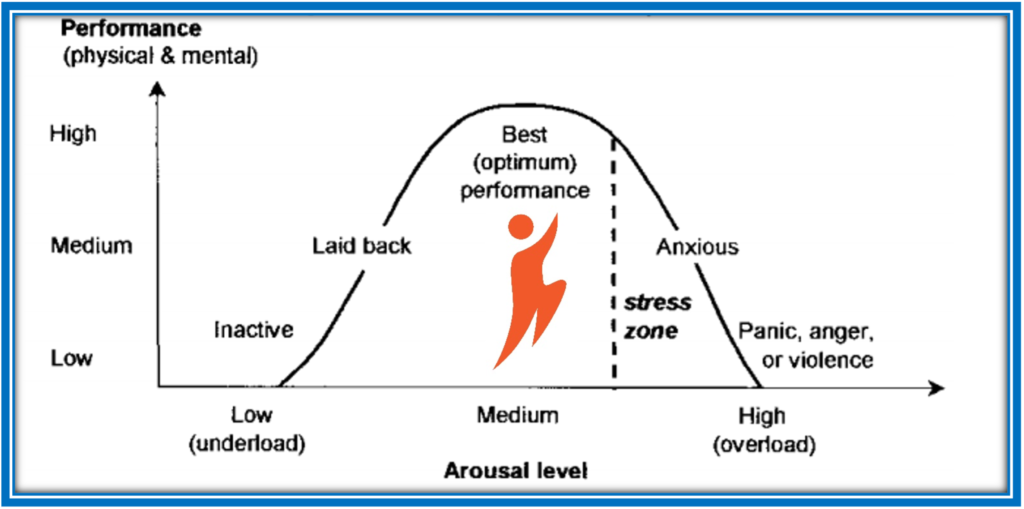
For all referees to consistently perform at, or near their own top abilities, they need to identify their own best intensity level. However, it’s important to know that the correct level of intensity differs for various tasks/skills.
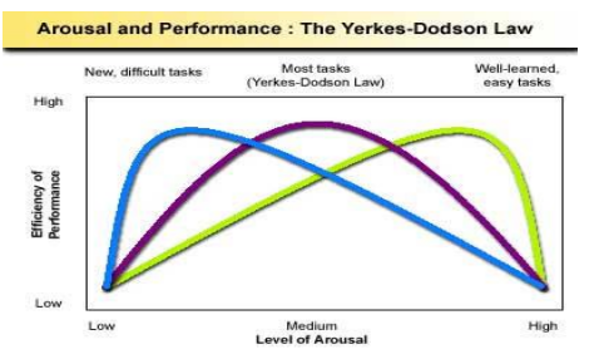
- Complex/unfamiliar tasks (learning a new skill, taking a test, giving in-game talk to agitated coach, calling a penalty): Recommend low intensity
- Familiar tasks (basic elements of the game): Recommend medium intensity
- Movement tasks (sprinting, transition moments, getting out of the way of ball in tight space): Recommend high intensity
The more you need to involve your brain, the less arousal you need. – Rule of Thumb
Develop a Routine for Appropriate Intensity
Developing a set routine is the first step. To do this, I’d recommend you first test this out during a training session or two, ow while watching a game. Follow these steps:
- Education: Set a common understanding of what and why intensity management is critical to your performance (use this page as a starting point).
- Identify the Best Target Intensity Level for You: Set a target level appropriate for your role: Ctr, AR, 4th (recommend starting with a 5-7 out of a 1-10 scale). While each ref is a little different, 7 is a good starting point.
- Create Routine: Work to develop a set routine for increasing, decreasing or maintaining effective intensity levels.
- Implement: Create time to implement and set a commitment to follow this process. Understand that failure is part of the learning process. It is highly likely that it will take some work before the right routines are established, so commit to the process.
- Feedback loops: Create constant and consistent feedback loops that measure the effectiveness of your routine. Get feedback after each game/training session if possible. Use the attached document to help evaluate your intensity levels.
- Adjust & Refine: Make adjustments to the routines based on the feedback.
As a referee, there are three things you should remember:
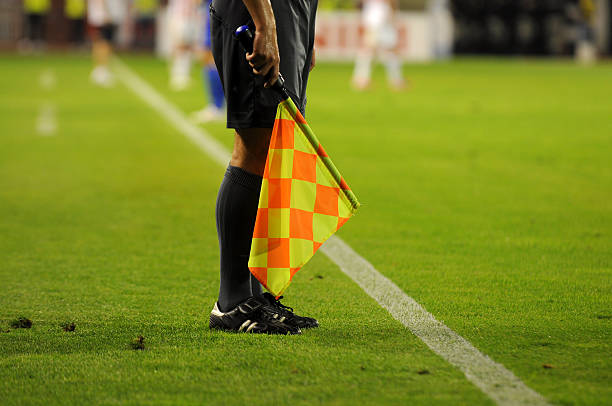
- Failure is part of the process: Expect it to take 4-6 training sessions/games before you may be able identify your optimum intensity level for certain skills and decision-making moments to understand how to get there.
- Manage outside influence: Your own off-field behavior can influence your intensity. Be careful of what you say and do, especially pre-game, as this can have a big impact.
- Stick to the routine: Setting and sticking to a routine will help you manage your intensity. Treat all games like a normal game.
Target arousal levels may differ for each individual referee and whether they are a middle or line, but should NOT differ based on the competition.
IDEAL INTENSITY MOMENTS: Assign a number 1-10
Warm-up:
SPA:
DOGSO:
Corner Kick:
Goal Kick:
Arial Challenge on punt:
Dealing with yelling coach:
In the end, we tend to do in competition that which we practice. So, think about the most effective intensity levels for each part of your work as a referee. Then work to get yourself there as you watch games and train.
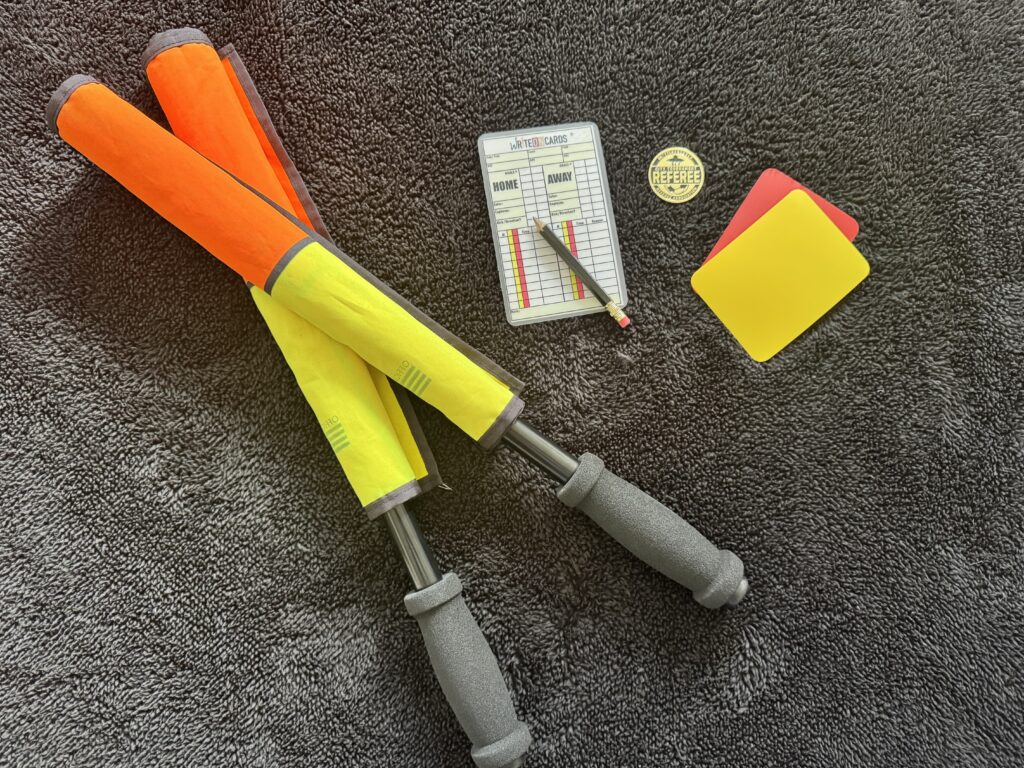
- Getting Your Intensity Level Right - March 17, 2025
- Building a Functional Resilience Plan is Vital to a Referee’s Success - February 18, 2025
- sport in a pandemic: Crisis or opportunity?Chapter 4 - December 4, 2020

